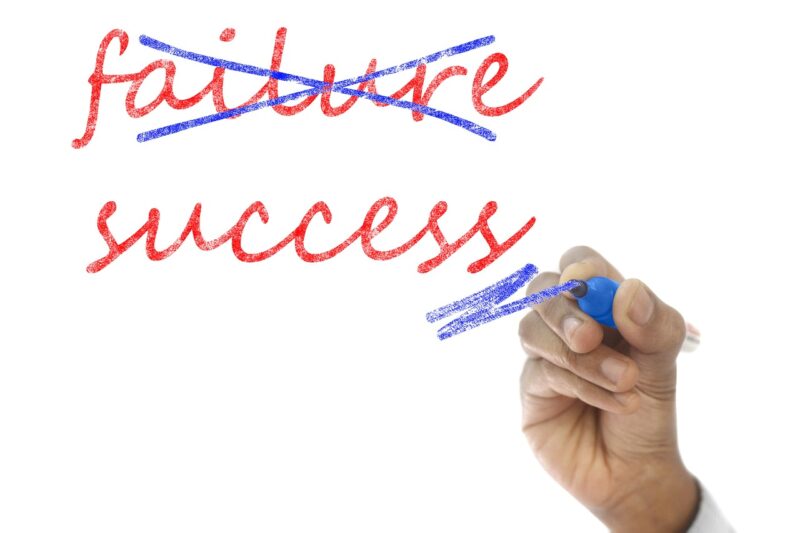Why You Should Embrace Your Failures and Learn from Them
November 10, 2024

Failures are often viewed as negative experiences; however, they play a pivotal role in shaping our successes. Learning to embrace failure can lead to personal growth, resilience, and a deeper understanding of our goals and aspirations. In this article, we’ll explore why failure is not something to fear but rather an opportunity to learn, grow, and ultimately achieve a more fulfilled life.
1. The Nature of Failure: A Universal Experience
Failure is a universal experience that spans across cultures, professions, and personal lives. No one is immune to failure, whether you’re a student, a professional, or an entrepreneur. Some notable figures who have embraced their failures include:
- Thomas Edison: Famously quoted for saying, “I have not failed. I’ve just found 10,000 ways that won’t work.” His determination eventually led him to invent the light bulb.
- J.K. Rowling: Before Harry Potter became a global phenomenon, Rowling faced numerous rejections from publishers. Her persistence in the midst of failure is now a part of her inspirational journey.
- Steve Jobs: After being ousted from Apple, the company he co-founded, Jobs experienced significant setbacks before returning and leading Apple to new heights.
These examples highlight that failure is not the end but rather just a step along the road to success.
2. Understanding the Benefits of Embracing Failure
The idea of embracing failure may be unsettling, but it has several benefits:
- Growth Mindset: Embracing failures encourages a growth mindset, the belief that abilities and intelligence can be developed through dedication and hard work. A growth mindset fosters resilience, making individuals more likely to confront challenges head-on.
- Learning Opportunities: Every failure carries valuable lessons. Instead of viewing failure as a defeat, analyze what went wrong and how you can improve in the future. This analysis promotes continuous learning and adaptation.
- Increased Resilience: Experiencing failure builds emotional resilience. The ability to bounce back from setbacks is crucial in both personal and professional life, allowing individuals to face future challenges with renewed strength.
- Encouraging Innovation: In environments where failure is embraced, creativity flourishes. Companies like Google and Amazon have innovation-led cultures that encourage experimentation—where employees learn and grow from each attempt, whether successful or not.
By reframing failure as a learning experience, you open yourself up to more profound insights and opportunities for growth.
3. Practical Steps to Embrace Your Failures
If you’re ready to change your perspective on failure, here are practical steps to help you embrace it:
- Acknowledge Your Feelings: Allow yourself to feel disappointment or frustration after a failure. Ignoring these emotions can be counterproductive. Journaling or talking with friends can help process these feelings.
- Assess the Situation: Take time to analyze the failure. What went wrong? What could you have done differently? Identify the root causes to gain insights that can inform your future decisions.
- Reframe Your Narrative: Change how you speak about your experiences. Instead of saying “I failed,” consider phrases like “I learned” or “I discovered what doesn’t work,” which encourages a more constructive mindset.
- Set New Goals: Use your experiences to refine your goals and approaches. Establish realistic, achievable objectives that incorporate your newfound knowledge, and celebrate small wins along the way.
- Share Your Story: Consider sharing your failures and what you’ve learned with others. This transparency can inspire and support those facing similar challenges and foster community resilience.
Integrating these steps into your life can fundamentally transform your approach to not just failure, but also success.
4. Inspiring Stories of Overcoming Failure
Real-life stories offer compelling evidence of the power of embracing failure. Consider:
- Oprah Winfrey: Winfrey faced numerous challenges throughout her life, including rejection early in her career and hardships in her personal life. By using these experiences to fuel her ambition, she became one of the most influential women in the world.
- Elon Musk: Musk experienced multiple failures while launching SpaceX, including several rocket explosions. Instead of giving up, he learned from each mishap and ultimately developed a successful space program.
- Richard Branson: The Virgin Group founder has faced numerous business failures, including Virgin Cola and Virgin Brides. Each failure taught him crucial lessons about risk, resilience, and adapting to market changes.
These examples illustrate how embracing failure can lead to incredible achievements when leveraged correctly.
5. Conclusion: Failures as Stepping Stones to Success
In the pursuit of success, failures are not the end of the road but rather stepping stones that lead us to greater heights. By embracing your failures, analyzing them, and learning from them, you pave the way for personal and professional growth. Remember, every setback is an opportunity in disguise, and by changing your perspective, you can unlock the potential for long-lasting success.
The next time you face a failure, remember that it’s not the end but a chance to learn, adapt, and evolve. Embracing failures may just be one of the most powerful tools you’ll have in your journey towards success.






